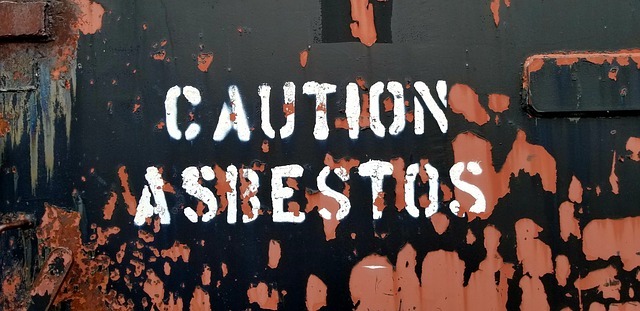Asbestos is a naturally occurring mineral that has been used in numerous industries for its heat-resistant properties. It was commonly used in building materials, such as insulation, ceiling tiles, and roofing shingles, until the late 20th century when its health hazards were discovered. Asbestos exposure can lead to serious health consequences, including lung cancer and mesothelioma. The World Health Organization has labeled asbestos as a known human carcinogen. If you live in an older home or work in an industry that uses asbestos, it is important to be aware of the potential risks associated with exposure. Here are the top 6 reasons why you should be concerned about asbestos exposure.

Health Risks Associated with Asbestos Exposure
Asbestos exposure can have serious health consequences, with long-term exposure increasing the risk of developing lung cancer, mesothelioma, and other respiratory diseases. Asbestos fibers are microscopic and can easily be inhaled into the lungs where they become lodged and cause damage over time. These diseases may not manifest until years or even decades after exposure, making them difficult to identify and treat. Even short-term exposure to high levels of asbestos can lead to irritation of the eyes, skin, and respiratory system.
The Lethal Effects of Mesothelioma
Asbestos exposure can lead to mesothelioma, a lethal cancer affecting the lungs, abdomen, or heart. This aggressive cancer, caused by asbestos exposure, may take decades to develop. Over 80% of mesothelioma cases have a history of asbestos exposure. Unfortunately, diagnosis often occurs at a late stage, limiting treatment options and survival rates. Awareness and precautionary measures are crucial to avoid asbestos exposure. If diagnosed with mesothelioma or knowing someone who is, seek specialized medical care and inform your doctor of any asbestos exposure history. Early detection and treatment improve survival chances and quality of life.
The History of Asbestos and Its Usage in Various Industries
Asbestos has been used for centuries, with historical evidence of its use dating back to ancient civilizations. Its heat-resistant properties made it a popular choice in various industries, including construction, shipbuilding, and manufacturing. In the 19th century, asbestos became increasingly popular due to the Industrial Revolution and was widely used in building materials such as insulation and roofing. Its usage peaked in the mid-20th century, and it wasn’t until the 1970s that its harmful effects were recognized. Despite its ban in many countries, asbestos is still used in some industries today, putting workers at risk of exposure.

Understanding Asbestos-Related Lung Diseases and Their Symptoms
Asbestos-related lung diseases, such as lung cancer and mesothelioma, are caused by long-term exposure to asbestos fibers. These fibers can damage the lungs and cause scarring, leading to difficulty breathing and reduced lung function. The symptoms of these diseases may not appear until decades after initial exposure, making it difficult to diagnose in its early stages. Common symptoms include shortness of breath, chest pain, and a persistent cough. If you have been exposed to asbestos in the past, it is important to monitor your health and seek medical attention if you experience any symptoms related to these diseases. Early detection can lead to better treatment outcomes and improve your chances of survival.
Legal Implications
The discovery of the harmful effects of asbestos has led to numerous lawsuits and regulations surrounding its usage. In many countries, it is now banned or heavily regulated, prohibiting its use in new construction and requiring proper handling and disposal of existing materials containing asbestos. Those who have developed mesothelioma or other asbestos-related diseases due to exposure may be entitled to compensation through legal action against the companies responsible for their exposure. These lawsuits have also led to increased safety regulations and awareness of asbestos in the workplace, ultimately leading to a decrease in overall asbestos-related illnesses.
Safety Measures for Asbestos Handling and Removal to Minimize Health Risks
To minimize the health risks associated with asbestos exposure, take proper safety measures when handling and removing any materials containing asbestos. This includes wearing appropriate personal protective equipment (PPE) such as masks and gloves, wetting down the material to prevent fibers from becoming airborne, and properly disposing of all materials contaminated with asbestos. Have a trained and licensed professional handle any asbestos removal to ensure it is done safely and under regulations. Moreover, if you are living or working in an older building that may contain asbestos, be aware of its location and condition. Any damaged or deteriorating materials should be reported and promptly addressed by a professional to prevent potential exposure.
Asbestos exposure can have serious and potentially deadly consequences. If you have a history of asbestos exposure or are experiencing symptoms related to asbestos-related diseases, seek medical attention immediately. By understanding the risks and taking precautions, we can prevent future cases of asbestos-related illnesses and promote a safer environment for ourselves and those around us. Stay informed and stay safe!



